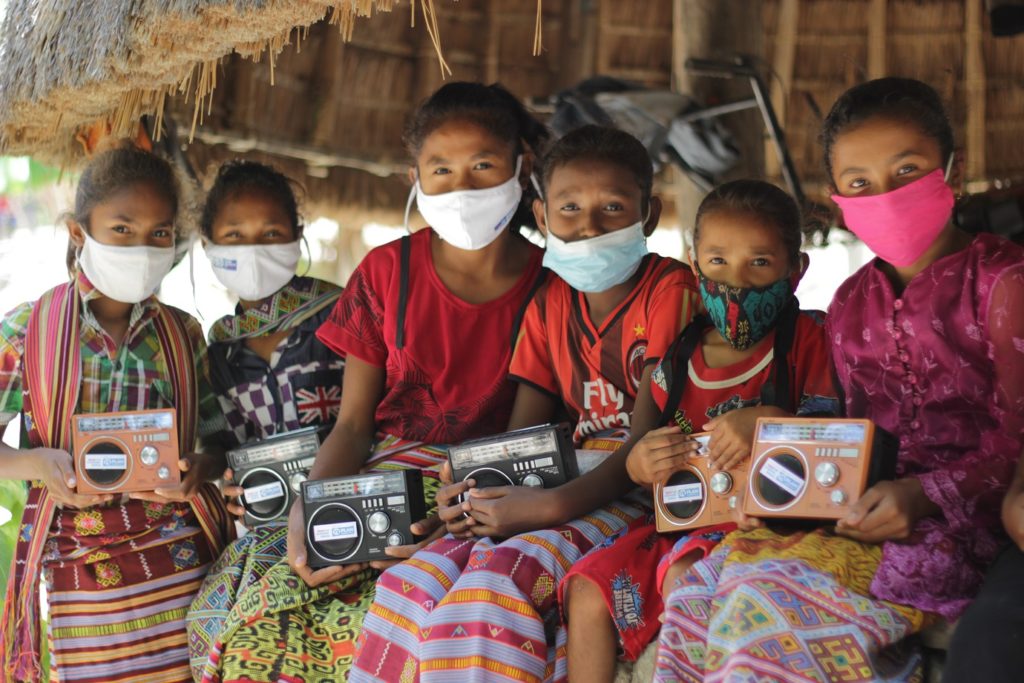Many adolescent girls across South East Asia and the Pacific region have experienced significant disruptions to their education as a result of the COVID-19 Pandemic, with many being forced to drop out of school altogether.
Many high school aged girls in the region have taken on more household duties instead of continuing their education, while some have been forced into child marriages, and are experiencing increased rates of gender-based, domestic violence.
That’s according to Plan International Australia’s latest report, Smart, Successful, Strong: the case for investing in Adolescent girls’ education in aid and COVID-19 response and recovery, which highlights the importance of educating girls through their high school years, especially as countries look to recover from the pandemic.
“Adolescent girls in the region face extraordinary challenges to accessing education. These challenges are unique to their young age and gender,” said Susanne Legena, CEO of Plan International Australia.
“The age bracket between 10 and 18 years is pivotal to determining the trajectory of a girls’ life – it’s a time when families make decisions as to whether girls marry, take on low paid work or continue their education.”
We are very proud to release our latest report today, Smart, Successful, Strong: The Case for Investing in Adolescent Girls’ Education in Aid and COVID-19 Response and Recovery! 🎉 Read the full report at https://t.co/hTExbVu7K6
— Plan International Australia (@PlanAustralia) March 15, 2021
The report from Plan International Australia is based on interviews, workshops and online surveys with 450 high-school aged girls across 10 countries including Vietnam, the Philippines, Thailand, Kiribati and Fiji.
It found that online study was near impossible for the 59 per cent of adolescent girls who shifted to remote learning at the beginning of the pandemic. Factors like unreliable internet, a lack of access to devices like tablets and computers, and feeling unsafe online, contributed to the challenges of remote learning.
These kinds of disruptions to education affected girls’ mental health and emotional wellbeing, with many girls speaking of stressful home environments, where parents were unable to support their learning.
The report highlights that as schools in South East Asia and the Pacific return to face-to-face learning, many girls are not returning at all. Girls’ education is often viewed as not as valuable as boys’ education, and it’s leading to some tragic outcomes for girls in these regions.
In Indonesia, the number of applicants to marry underage in the first half of 2020 reached 24,000, according to Plan International. This more than two and a half times the total number of applicants for the entirety of 2012.
It’s estimated that in total, there were 33,000 child marriages in Indonesia in 2020, which saw a reversal of the downward trend that had been seen in recent years.
As the rate of child marriages have increased, there have also been more calls recorded to domestic violence helplines in South East Asia and the Pacific during COVID-19.
One study revealed that in Bangladesh, physical beatings by parents or guardians had increased by 42 per cent, while calls to the child helpline rose by 40 per cent. Data emerging from the Pacific region also shows that domestic violence has intensified since the pandemic began, Plan International said.
As countries start to recover economically from the harsh impacts of the pandemic, Plan International Australia says securing girls’ education in regions like the Pacific and South East Asia can massively boost economies, while also improving lives on the individual level.
Susanne Legena says Australia has an important role to play in improving the educational outcomes of girls in the Pacific and South East Asia, and should be contributing more the Global Partnership for Education to help get girls back to school.
“Ensuring girls can complete 12 years of education is one of the best investments that Australia’s aid and development program and governments in the region can make,” she said.
“We know that 12 years of girls’ education could provide the economic benefits that will help power the much-needed economic recovery in the region.”
Currently Australia commits $30 million a year to the Global Partnership for Education fund, a relatively low amount compared to other developed nations like the UK, US, France and Germany.


